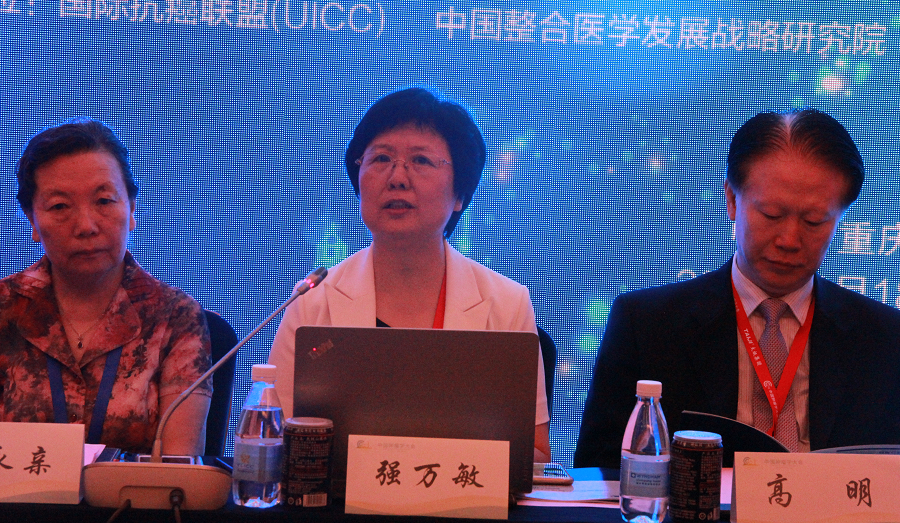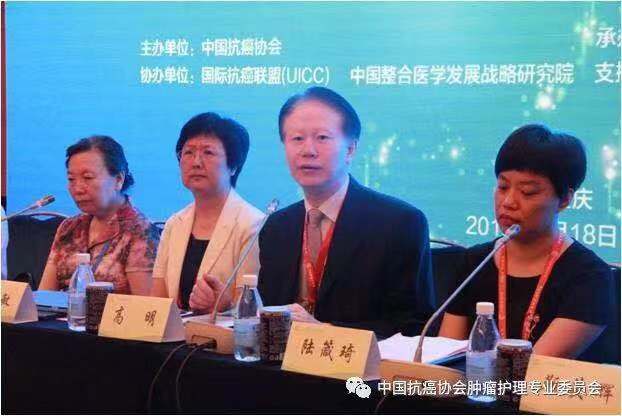

The "Guidelines for the Practice of Cancer Symptom Management in China" has three major characteristics and three far-reaching significance.It achieves a 3+3 effect. Three characteristics: Firstly, it is scientific and strictly follow the latest definition of IOM guidelines, based on the WHO standard guideline methodology, using the GRADE method for evidence classification and recommendation development. Each recommendation has a clear explanation, standardized implementation methods. Each recommendation provides an objective description of the validity, safety, economy, patient/career values, etc. The third is the integration of medical characteristics. It is about multi-disciplinary teamwork, including medical, nursing, psychological, nutritional, pharmacy, palliative treatment and other professionals.
The three far-reaching significance of the "Guidelines for the Practice of Cancer Symptom Management in China" are as follows: 1. Standardize the practice of evidence-based nursing, which can be used as a guiding tool for evidence-based nursing practice. It will promote standardized and homogenized symptom management and improve the care of cancer patients’ quality of life, prolong survival, avoid the application of clinical ineffective intervention, reduce medical consumption, reduce medical expenses, and save medical resources; Secondly, it updates conventional concepts. Third, it broads the research direction of symptom management. The recommendations of some auxiliary treatment technologies in this guide are still to be verified (weak recommendation), and multi-center joint, big data, and longitudinal exploratory research were urgently needed in the future to open up more clinical research for nursing staff.

First of all, Director Wanmin Qiang introduced the background and significance of the Guide. Symptoms caused by cancer diagnosis and treatment are becoming more and more prominent, including physical, psychological, social, spiritual, economic, occupational, role disorder, loss of life meaning, etc.,which affected patients' long-term quality of life and survival. At present, many international academic organizations, such as the National Comprehensive Cancer Network (NCCN) and the American Society of Clinical Oncology (ASCO), had also developed a lot of guidelines, but mainly focus on clinical diagnosis and treatment, and often lacked some adjuvant treatment interventions for nursing. Meanwhile the development of guidelines in our country was also insufficient. At the 2019 CCO conference, the “China Cancer Symptom Management Practice Guidelines” covering 9 symptoms including anorexia and radiation dermatitis officially came out.

Professor Ming Gao introduced the impact of the publication of the “Guidelines for the Practice of Cancer Symptom Management in China” on the rehabilitation of cancer treatment from a medical perspective. First of all, he pointed out that as the former chairman of the thyroid cancer professional committee and the chairman of the head and neck cancer professional committee. In recent years, the committee had also done a lot of guidelines or expert consensus. The purpose of this work was to standardize the clinical work. However, nursing of cancer care was still lacking in this aspect of the guidelines. Therefore, it was necessary to provide evidence-based care about cancer-related symptoms for clinical medical staff, and implement diagnosis and treatment of patients with best practice evidence. It can regulate the behavior of medical staff and improve the medical quality of medical institutions. Secondly, he said that as a doctor, he had been in charge of nursing work for nearly 12 years, and he had a deep understanding and experience in nursing work. He believed that nursing management should also be integrated, precise, and standardized. It was necessary to put the work into practice.
Director Zhenqi Lu pointed out that the Guideline had far-reaching implications for the development of the oncology nursing. It was reflected in the development and application of the "Guidelines for the Practice of Cancer Symptom Management in China", which will promote the construction of the oncology nursing discipline.
Prof. Yinghui Jin introduced the scientific and rigorous control of the methodology of the Guide to the on-site media. Firstly, the guideline was constructed in strict accordance with the latest definition of the guidelines of the American Medical Research Institute and based on the methodology of the WHO Standards Guide. The evidence grading and recommendation development were based on the GRADE methodology to ensure clear and transparent guideline development process. Secondly, multidisciplinary participation and the establishment of a guide group composed of multidisciplinary experts. In addition, in the stage of recommendation formation and guidelines, the multi-disciplinary experts such as clinical, psychological, nutrition, pharmacy, palliative care and nursing were invited to conduct face-to-face expert consensus meetings for the characteristics of each symptom.

It is believed that the promotion and application of the guidelines in the clinic will bring new dawn to the rehabilitation of cancer patients.
From:Oncology Nursing Committee of China Anti-Cancer Association .August 23,2019




